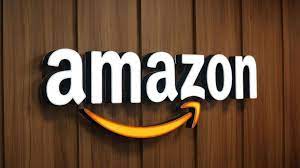Amazon Web Services sales and support teams are currently “spending much of their time helping customers optimize their AWS spend so they can better weather this uncertain economy.”So said Amazon.com CEO Andy Jassy in his annual letter to shareholders published last week.
“In AWS, like all our businesses, we’re not trying to optimize for any one quarter or year,” the CEO explained. Instead, all of Amazon is “trying to build customer relationships (and a business) that outlast all of us; and as a result, our AWS sales and support teams are spending much of their time helping customers optimize their AWS spend so they can better weather this uncertain economy.”
“Many of these AWS customers tell us that they’re not cost-cutting as much as cost-optimizing so they can take their resources and apply them to emerging and inventive new customer experiences they’re planning,” he added. “Customers have appreciated this customer-focused, long-term approach, and we think it’ll bode well for both customers and AWS.”
“While these short-term headwinds soften our growth rate, we like a lot of the fundamentals that we’re seeing in AWS,” Jassy added. Those fundamentals include “robust” pipelines for new customers and active migrations.
“Many companies use discontinuous periods like this to step back and determine what they strategically want to change, and we find an increasing number of enterprises opting out of managing their own infrastructure, and preferring to move to AWS to enjoy the agility, innovation, cost-efficiency, and security benefit,” he wrote.
That list does not include cost savings, a factor that has seen SaaS outfit 37Signals quit the cloud and software vendor Ahrefs estimate that operating its own hardware in a colo datacenter saves it $400 million.
When The Register speaks to vendors of on-prem hardware, we hear similar messages about customers quitting the cloud to save money. One analyst of our acquaintance, however, likened such reports to accounts of migration from California to other US states with higher growth rates: plenty leave and complain loudly on their way out, but plenty more arrive.
Back to Jassy’s letter, which also mentions AWS’s intention to develop more custom silicon.
“We’re not close to being done innovating here, and this long-term investment should prove fruitful for both customers and AWS,” he wrote, referring to the Inferentia silicon aimed at machine learning workloads. The CEO also talked up the improved price/performance of the Graviton CPU, although cloudy analyst Corey Quinn disputed that claim, tweeting “r Graviton2 --> Graviton3 instance equivalents are over 6% *more* expensive like-for-like.”
Jassy also observed that AWS’s run revenue rate is now $85 billion a year and grew 29 per cent year on year from $62 billion in 2022. That makes AWS bigger than Cisco, Lenovo, HPE, Oracle, and SAP. Of Dell’s $102 billion FY 2023 revenue, $89.4 billion was won from businesses – AWS is just $4 billion behind that sum now and closing fast. Microsoft’s “more personal computing” business earned almost $60 billion of the company’s $198 billion FY 22 revenue; leaving its business-derived revenue a few years of growth ahead of AWS‘s.
Yet as Jassy observed, “with about 90% of Global IT spending still on-premises and yet to migrate to the cloud” AWS still has plenty of upside.
His letter argues that other Amazon businesses are earlier in their development than AWS, so while the economic climate will be reflected in some wobbles that make investors feel jittery, Amazon is investing in new businesses that will fuel future growth.
Exhibit A for the prospects of that plan is AWS itself, which Amazon funded extensively during the global financial crisis of 2007 and 2008.
Jassy argued that Amazon’s “Kuiper” satellite broadband service is now at the same stage as AWS during that downturn.
“It’s capital intensive at the start, but has a large prospective consumer, enterprise, and government customer base, significant revenue and operating profit potential, and relatively few companies with the technical and inventive aptitude, as well as the investment hypothesis to go after it,” he wrote.
“We’re preparing to launch two prototype satellites to test the entire end-to-end communications network this year, and plan to be in beta with commercial customers in 2024,” he added. “The customer reaction to what we’ve shared thus far about Kuiper has been very positive, and we believe Kuiper represents a very large potential opportunity for Amazon.”





